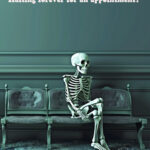Tired of waiting two months for an appointment you need now?
If you expect more, you can have more. Research shows that wait times to see your doctor go up every year. Our office spends time looking at research on healthcare trends so that we can buck these trends in our office to make you life easier, and to make our work more efficient and fulfilling. We aren’t happy if we aren’t making other peoples lives better. The average delay time between calling and seeing a medical specialist varies depending on the specialty and location, but overall it has been increasing in recent years. Here are some key points: 1. The average wait time across medical specialties is about 26-38 days: – A 2022 survey by AMN Healthcare found the average wait time for new patient appointments across five specialties was 26 days, up 8% from 2017 and 24% from 2004[1][3]. Wait times were already too long. – A more recent study by ECG Management Consultants found the average wait for the third next available appointment across 11 specialties in 23 metro areas was 38 days[2][4]. 2. Wait times vary significantly by specialty: – Rheumatology had the longest average wait time at 68 days[2]. – Neurology had the second longest...
read moreWhat is the biggest complaint(s) that patients have of their doctors?
The biggest complaint that patients have about their doctors appears to be related to time and attention issues. Long Wait Times Patients frequently complain about having to wait too long to see their doctor, both in terms of scheduling appointments and in the waiting room on the day of their visit[1][5][6]. Long wait times can be very frustrating for patients, especially if they arrive on time for their scheduled appointment[6]. Before I opened my practice in Portland, I often wondered how and why doctors were so often behind. One of the reasons that has become abundantly clear, is unexpected issues and concerns of patients. Something important to the patient comes up, and in an effort to spend enough time with them so that they feel heard and taken seriously, and the extra time for them, makes the doctor behind for you. What we do at our office is remind you that all patients will get the time they need at any given time, in order to help them understand their situation. The good news: This applies to you too. The bad news: This applies to you too. Some days you won’t need extra time but others will, so you...
read moreAre you dying for sleep?
Bad sleep is not due to a lack of medication. It’s due to life. If you are a patient of ours, we’ve probably had a discussion about sleep and its incredible importance. Part of our program for patients who don’t heal in an appropriate time frame, or whose stress level or anxiety impairs function, is to work on natural solutions to better sleep. Better sleep is one of our specialties, and we can help you and your body help itself. The following list is full of reasons to reconsidering letting your sleep “go” as less important than other parts of your life. If you are having issues with more than 5 of the items on the list below, it’s time to learn about getting help. Bottom line: Sleep cannot be compromised for an extended period of time if you want to have a happy, healthy life. If this seems a bit extreme, blame the research for quantifying the value of sleep. Sleep is essential for overall health and well-being. Here are some key reasons why sleep is so important: 1. Physical restoration and repair: During sleep, the body repairs tissues, synthesizes proteins, and releases growth hormones. This helps with...
read moreBreast Reduction Surgery For Back Pain – Dr. Lou Jacobs – Portland, Maine
MAJOR Surgery In the face of major surgery, we should always ask ourselves, “Is there a better, safer way to accomplish the same results or better?” Back pain is awful and chronic worsening back pain is even worse. It’s extremely common, affecting over 80% of Americans in their lifetime. At any given time, it is the leading cause of disability worldwide. Chiropractic offices are packed full of people wanting relief and better function in their backs. So it’s no wonder that some large breasted women consider breast reduction surgery to alleviate strain and compression of the back as well as the dysfunction that accompanies the pain. I have had many patients who have elected for the surgery and were very pleased with the results. They had tried weight loss and other methods to either shed some weight, or alleviate the pain without surgery or drugs, and it hadn’t worked. Breast reduction surgery is considered a major surgery. It is also a solution for back pain for many women who qualify for the surgery. Here are some key points that highlight why it is always a good idea to do your research, weigh your risks, and try noninvasive choices like chiropractic,...
read moreWhat is a neurologically, or neurology based chiropractor?
Chiropractors who say they are neurology based, are like Dentists who say they are teeth based. Sure, there are specialties within each professions, but without having the additional education and board certification for those specialties, the “Baseline” chiropractor is trained to be neurology based. Some chiropractors have additional training in neurology, pediatrics, sports, pregnancy, and without training and certification, claiming to be one of those specialists is dishonest and fraudulent. All chiropractors attend doctoral programs after undergraduate college that has a standardized curriculum. All Doctors of Chiropractic are required to fulfill the same graduate level coursework that ultimately amounts to roughly 4,400 hours of course work. Needless to say, anatomy and physiology as well as diagnostics are cornerstones in this education. Spinal anatomy is also a huge focus. The greatest focus though is neurology and its relationship to the structure, function, and biomechanics of the body. Neurophysiology, neuroanatomy, neuropathology (disease), and all other areas of neurology are standard in the studies to be a chiropractor. So what does it mean when a chiropractor says that they are neurology based? It means that they have attended and completed chiropractic school, have become board certified and been licensed by the state...
read more




